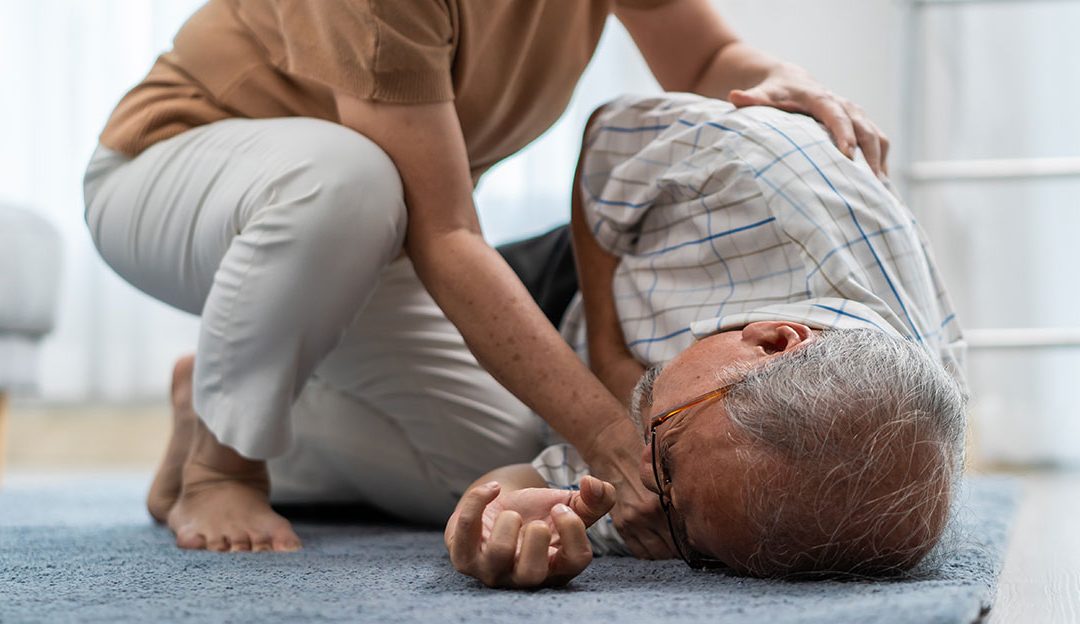The question of can fall detection devices detect fainting is becoming increasingly important, especially for seniors. As technology advances, these devices are designed not only to detect falls but also to provide a sense of security for those who are at risk of fainting. Fainting, or syncope, can be sudden and unexpected, leading to concerns about safety and independence. In this article, we’ll explore how these devices work and whether they can effectively detect fainting episodes.

What Are Fall Detection Devices?
Fall detection devices are wearable technologies that use sensors to detect sudden movements or lack of movement, indicating a fall. These devices are often equipped with accelerometers and gyroscopes to monitor the user’s movements. Upon detecting a fall, they send an alert to caregivers or emergency services.
How Do Fall Detection Devices Work?
These devices work by analyzing movement patterns. When a significant change in motion is detected, such as a rapid descent followed by a period of inactivity, the device triggers an alert. The technology behind these devices is continually improving, aiming to reduce false alarms and improve accuracy.
The Role of Sensors in Detection
Sensors are crucial components of fall detection devices. They measure acceleration and angular velocity, allowing the device to differentiate between a fall and normal activities. The precision of these sensors determines the device’s effectiveness in detecting falls and potentially fainting.
Can Fall Detection Devices Detect Fainting?
The ability of fall detection devices to detect fainting is a subject of ongoing research. Fainting often results in a sudden drop in blood pressure and loss of consciousness, leading to a fall. Some devices are capable of recognizing this sequence of events, but accuracy can vary.
Challenges in Detecting Fainting
One challenge is that fainting doesn’t always involve a dramatic motion. In some cases, the person may simply slump or collapse slowly, which might not trigger the device in the same way a fall would. This can lead to missed detections.
Improving Detection Accuracy
Manufacturers are seeking to improve the sensitivity and specificity of these devices. Incorporating additional physiological data, such as heart rate or blood pressure, could enhance their ability to detect fainting episodes more reliably.
Benefits of Fall Detection Devices for Seniors
For seniors, fall detection devices offer numerous benefits. They provide peace of mind, allowing individuals to maintain their independence while ensuring that help is available when needed. These devices can also be integrated into broader independent living systems, enhancing their effectiveness.
Enhancing Safety and Independence
By using fall detection technology, seniors can feel more secure in their daily activities. The knowledge that assistance is just a button press or automatic alert away can reduce anxiety and encourage a more active lifestyle.
Supporting Caregivers
These devices also support caregivers by reducing their worry and workload. Knowing that the senior in their care is monitored and that they will be alerted in case of an emergency allows caregivers to focus on other responsibilities.
Current Innovations in Fall Detection
Recent innovations have expanded the capabilities of fall detection devices. Advances in artificial intelligence and machine learning are enabling more accurate detection and prediction of falls and fainting episodes.
Integration with Telehealth
The integration of fall detection with telehealth services is providing new avenues for remote monitoring and care. This allows for real-time health data analysis and prompt responses to potential health emergencies.
Future Prospects
Looking ahead, the future of fall detection technology is promising. Continuous improvements in sensor technology, data analysis, and integration with other health monitoring systems will likely enhance the detection and prevention of falls and fainting.
Challenges and Limitations
Despite the benefits, there are challenges and limitations to consider. False positives and negatives can lead to issues of reliability and trust in these devices. Additionally, the cost of advanced devices may be prohibitive for some users.
Overcoming False Alarms
Efforts are being made to minimize false alarms through better algorithms and sensor technology. Ensuring that devices accurately distinguish between falls, fainting, and normal activities is key to their success.
Affordability and Accessibility
Making these devices affordable and accessible is essential for widespread adoption. Collaborations between manufacturers, healthcare providers, and insurance companies could help reduce costs and increase availability.
Conclusion
While the question of can fall detection devices detect fainting does not have a definitive answer yet, advancements in technology are moving us closer to a solution. These devices offer significant benefits for seniors, enhancing safety, independence, and peace of mind. Continued innovation and research will undoubtedly improve their ability to detect fainting and other health events.

Frequently Asked Questions
Can all fall detection devices detect fainting?
Not all devices are designed to detect fainting specifically. Some may recognize the motion associated with fainting, but accuracy varies across products.
Are fall detection devices reliable?
Most fall detection devices are reliable, but they can produce false positives or miss certain events. Choosing a device with advanced features can improve reliability.
Do I need a prescription for a fall detection device?
No, fall detection devices are typically available without a prescription. However, consulting with a healthcare provider can help in selecting the most suitable device.
For more information on preventing falls among seniors, visit this resource.
This article contains affiliate links. We may earn a commission at no extra cost to you.

